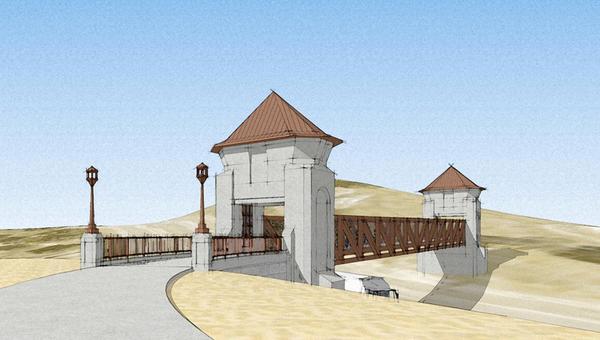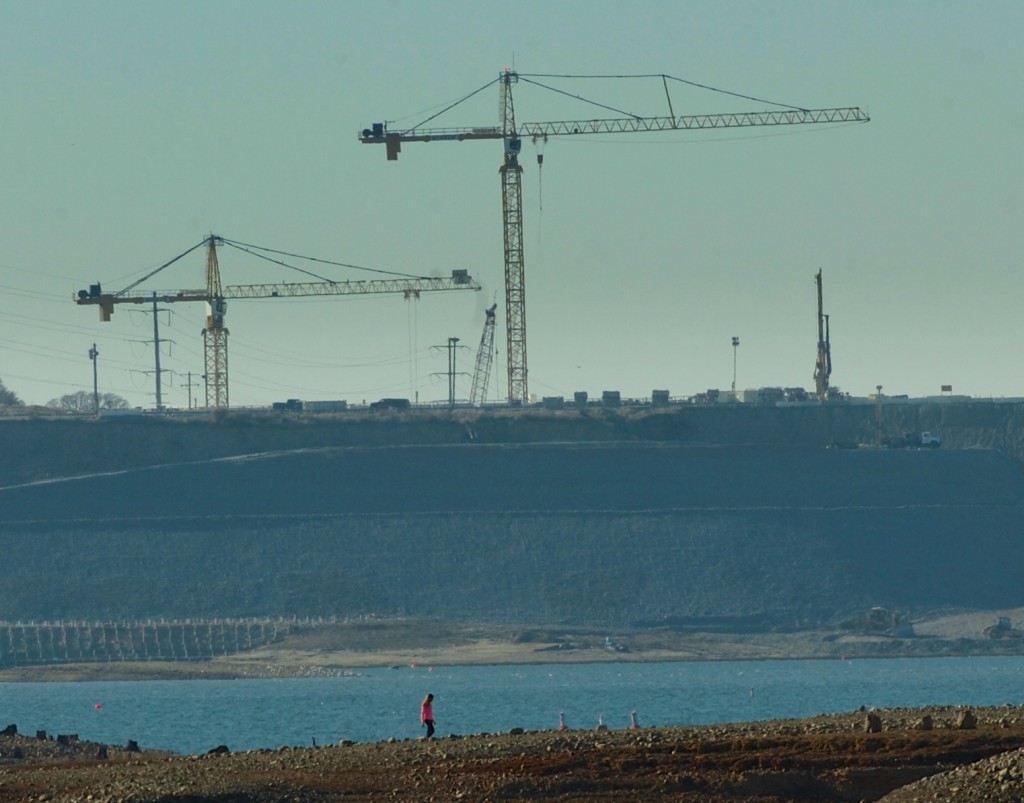After six years of construction, a momentous event is expected later this month at the new flood-control spillway being built at Folsom Dam: The steel flood-control gates – the mechanical heart of the project – will begin to arrive for installation.
This event will be hard to miss, because the gates are so large that 600 miles of roadway between Folsom and Portland, Ore., will have to be closed – in legs – as they make their way south. The journey will require 18 separate shipments.
The billion-dollar project at Folsom Dam, funded mostly by federal taxpayers, is intended to double the dam’s flood-protection rating to shield the Sacramento region from the biggest storms on the American River. In a drought year as bad as this one, it may be hard to imagine the need for this capacity. But it hasn’t been that long since the current dam’s limits were revealed. In 1986, the reservoir overfilled and flood-control officials were briefly forced to release more water than downstream levees were rated to withstand. Sacramento narrowly avoided disaster.
Although construction has been underway since 2008, most of the work has gone unnoticed except to residents near the project site and regular visitors to the lake. The delivery of the gates will change that, because it will require extended road closures throughout the region.
There are six main gates in the new spillway, designed to release water earlier and faster during a flood. Each assembled steel gate is about 40 feet long, 45 feet tall and 30 feet wide.
Imagine 12 school buses strapped together in a cube, three wide and four high, and you begin to get an idea of the challenges involved in transporting each gate.
“It’ll be pretty interesting, pretty spectacular, for them to be moving something this large down from Oregon,” said Rick Johnson, executive director of the Sacramento Area Flood Control Agency, which is funding the local share of the project through property taxes. “I anticipate it’ll be similar logistics to moving the space shuttle.”
The primary contractor on this phase of the spillway project is Granite Construction Co. of Watsonville, which holds a $125 million contract from the U.S. Army Corps of Engineers to build the gate-control structure. This massive structure is equivalent to building a whole new dam. It is as tall as the Statue of Liberty and requires enough steel to build two-and-a-half Eiffel Towers.
The steel gates were fabricated at Oregon Iron Works in Clackamas under a separate $45 million contract. The first road shipment will be made this month. The exact timing of the deliveries isn’t known yet, but the contractors are working with Caltrans, the California Highway Patrol and local governments on the details. They plan to alert residents through the news media when the shipments occur.
There are actually two gates for each of the six openings in the new spillway. The primary gate, called a tainter gate, rotates in an arc to control water releases into the new spillway. These gates are exposed to water pressure from the reservoir at all times. The secondary structure, called a bulkhead gate, is installed just upstream of the tainter gates. It is a flat panel that is lowered into a slot only when it is necessary to access the tainter gates for maintenance.
Each bulkhead gate is about as wide as two highway lanes and will be shipped in one piece, one at a time. The tainter gates are bigger – about three lanes wide. These will be shipped in two pieces: one trip for each gate’s girder framework, and another for each gate’s curved steel face. That makes a total of 18 truck trips.
Because Interstate 5 is only two lanes wide over most of its length, it will be necessary to close the highway entirely when the gates are delivered. The closures will occur only at night, said Army Corps project manager Katie Huff, and the trucks will lay over during the day. There are a number of well-known choke points along the way that could cause traffic delays, even at night, such as bridges over the Yolo Bypass and Shasta Reservoir.
A drive that normally takes a car about nine hours will instead take a couple of weeks for each shipment, Huff said. As a result, it will take months to deliver all the gates. By May, all the parts are expected to be on-site at the spillway construction area, where they will be assembled and lowered into place with a giant crane.
“This is a huge milestone,” said Rep. Doris Matsui, D-Sacramento, who has worked to secure federal funding for the project, including another $70 million in the new appropriations bill passed by the House in January. “It’s quite remarkable, and those gates are huge. I think it’s something people are really going to stop and look at.”
Once off Interstate 5, the gates will be trucked east on Interstate 80. Then they will travel along Madison Avenue to Greenback Lane, Folsom-Auburn Road and Folsom Lake Crossing to reach the construction site. Closures will be required on all these roads, as well.


